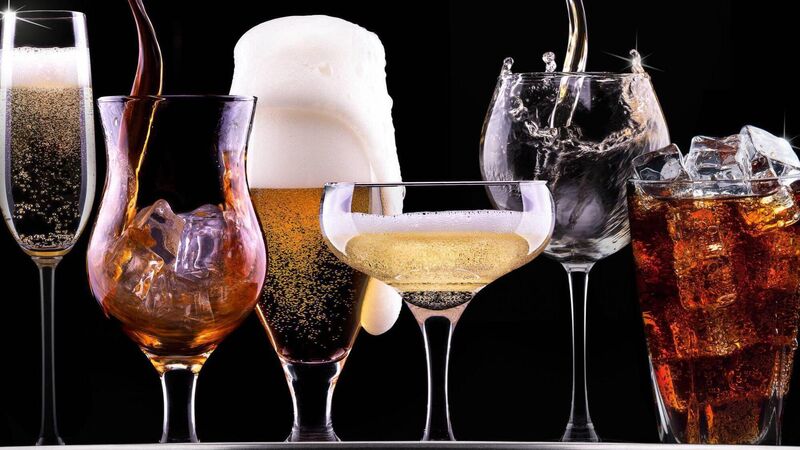Know your spirits level: Alcohol tolerance by the decades

The HSE’s weekly alcohol consumption guidelines are straightforward to follow: 11 standard drinks per week for women and 17 for men.
DRINKING and the pub have long been a mainstay of Irish society. Drinks on a night out are how most of us socialise. Good news, and milestones such as births, weddings, graduations and funerals are marked with “a few drinks”.
We’re not alone, but the amount of alcohol we drink per capita is among the highest in the world. We consumed 11.7 litres of pure alcohol (LPA) in 2019, the sixth-highest rate. The global average is 5.5 LPA. So says the World Health Organisation.
LPA is calculated by multiplying a drink’s alcohol by volume (ABV) percentage by volume; for example, 100 litres of a spirit with 40% ABV is 40 LPA. A drink’s ABV is the amount of pure alcohol in one litre.
The HSE’s weekly alcohol consumption guidelines are more straightforward to follow: 11 standard drinks per week for women and 17 for men. The guidelines for women are lower because they have lower levels of the enzyme alcohol dehydrogenase, which breaks down alcohol. They also have less water to dilute the alcohol, so it is more concentrated and has more effect.
The HSE also recommends two or three alcohol-free days during the week.
“Although there are guidelines, the bottom line is there is no safe level of alcohol consumption,” says Prof Frank Murray, consultant hepatologist and chairperson of Alcohol Action Ireland.
In Ireland, a standard drink (or unit of alcohol) has about 10 grams of pure alcohol. In drinks terms, this looks like a small glass of wine (125ml), a half-pint of beer, a pub measure of spirits (35.5ml), or a so-called alcopop (275ml bottle). For context, one bottle of wine typically contains about seven standard drinks (or units of alcohol).
How we tolerate and react to these drinks changes as we get older. “Younger people are simply more resilient than those in their 40s or 50s, for example,” says Sarah Keogh, registered dietician with Eatwell.ie. “As we get older, our bodies are slower to metabolise everything, including alcohol.”

Twenties
Although younger people can process alcohol faster than older people, they are at particular risk “due to the event of drinking”, says Murray.
“As many as one-third of alcohol-related deaths are due to the event of drinking. This includes fatal falls, death as a result of violence, fatal road-traffic accidents and suicide,” he says.
That’s because people in their 20s are more likely to engage in impulsive behaviour when drinking alcohol, says Murray. “In the UK, they recently revised down the drinking guidelines for men because of the negative effect alcohol can have on controlling impulsive behaviour.”

Thirties
Many people consider starting a family in their 30s — 33.3 is the average age of new mums in Ireland. However, for couples trying to get pregnant, alcohol can cause problems. Drinking even a moderate amount of alcohol can impact hormone levels: Oestrogen in women, and testosterone in men, which can affect the quality of their sperm. In women, alcohol consumption can also reduce their ovarian reserve (the number of eggs they have).
Also, drinking while pregnant can have serious consequences for the foetus, says Murray. “With any alcohol consumption during pregnancy, you run the risk of foetal-alcohol spectrum disorder, a series of physical, behavioural, and cognitive impairments that happen due to the baby being exposed to alcohol in the womb.”

Forties and fifties
Many people will have young or teenage children at this stage, and life is usually hectic. “At this age, we are not as tolerant of losing sleep. When you’re drinking, your sleep can be disturbed. It might feel like you sleep soundly, but it’s a false sleep — you will be missing out on deep sleep, which is when your body does all its recovering,” says Keogh.
For women, their 40s and 50s are typically when they experience perimenopause and menopause. “There’s not a lot of research into the impact alcohol has on menopause symptoms, but, anecdotally, we know that alcohol can exacerbate symptoms like hot flushes and disrupted sleep,” says general practitioner Dr Marie Finn, who specialises in women’s health.
“Often, at this time of their lives, women can struggle with anxiety or depression, which can also be affected by alcohol consumption. Some may turn to alcohol to try to tackle how they’re feeling, but this has a greater adverse effect.”

Sixties and seventies
It’s a time of life when we are less able to compensate for the effects of alcohol, says Murray. “Older people are 10 times more at risk of falling due to alcohol consumption than those in their 20s. That’s because we lose about 1% of our muscle mass every year from the age of 40.”
Muscle mass is our muscle strength. As it deteriorates, we are more susceptible to falls and slower to recover from them.
The amount of water in our body also reduces with age. This generally means that someone in their 70s who drinks the same amount as someone in their 20s will typically have a higher blood alcohol concentration (BAC). In short, the alcohol hangs around in our system for longer as we get older, meaning we feel drunker for longer.
As we get older, alcohol consumption can lead to other serious health issues. “Older people who consume alcohol are at greater risk of developing dementia, of having a stroke, of developing atrial fibrillation and experiencing higher blood pressure,” says Murray.
“Alcohol increases the heart rate and blood pressure, and, consequently, it increases the risk of cardiac arrhythmias, such as atrial fibrillation.
High blood pressure puts a strain on the heart and can lead to coronary disease and then to a heart attack and stroke,” says Dr Angie Brown, consultant cardiologist and medical director of the Irish Heart Foundation.
“Chronic alcohol excess can lead to alcohol-induced cardiomyopathy: In other words, it damages the heart. The alcohol toxicity weakens the heart muscle and can lead to heart failure.”
Effects of alcohol on heart and liver
At any age, alcohol presents a risk of developing cancer. Alcohol is classified as a group 1 carcinogen, which means it causes several types of cancer, including breast, liver, bowel, mouth, upper throat, larynx, and oesophagus.
While your risk of developing cancer increases the more you drink, the risk starts as soon as you start drinking, according to the World Health Organisation (WHO). In fact, half of all alcohol-attributable cancers in the WHO European region are caused by “light” and “moderate” alcohol consumption.
Breast cancer makes up 66% of all cases of alcohol-attributable cancers. Over 50% of all breast-cancer cases attributable to alcohol in Europe are not due to heavy drinking, However, about 33% of new cases each year are due to drinking the equivalent of up to two small glasses of wine a day.
“There is a direct correlation between breast-cancer risks and alcohol,” says Finn. “We need to have a wider conversation in Ireland about that.”
Liver damage
“Long-term chronic alcohol consumption can lead to liver damage. Whether that’s the development of fat on the liver, fat and inflammation, or scarring,” says Murray.
These liver conditions, though serious, are reversible, he says. “If you stop drinking, even if you’ve been drinking heavily for years, you can reverse conditions like fatty liver. But cirrhosis of the liver, on the other hand, is not reversible and can lead to liver failure.”
Drinking alcohol at any age is damaging. “In Ireland, over 1,500 deaths per year are attributed to alcohol, which is almost 5% of all deaths,” says Murray.
This figure doesn’t just include the physical harm alcohol does to our bodies, but also the by-products of drinking, like road deaths.
“In my job, I speak with thousands of people who have given up alcohol, and 19 out of 20 of those people say they feel better once they’ve given it up,” says Murray.
“At the end of the day, when it comes to alcohol and serious health risks, less is good, none is better,” says Keogh.
CONNECT WITH US TODAY
Be the first to know the latest news and updates

Celebrating 25 years of health and wellbeing










